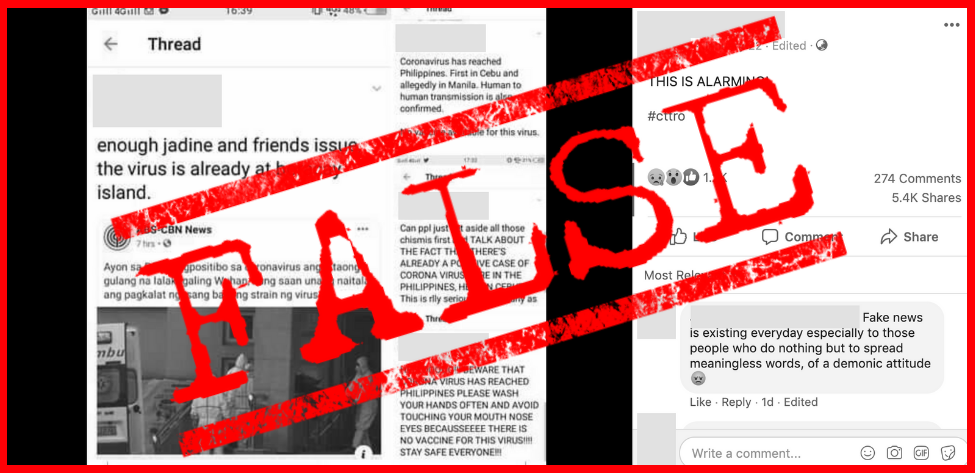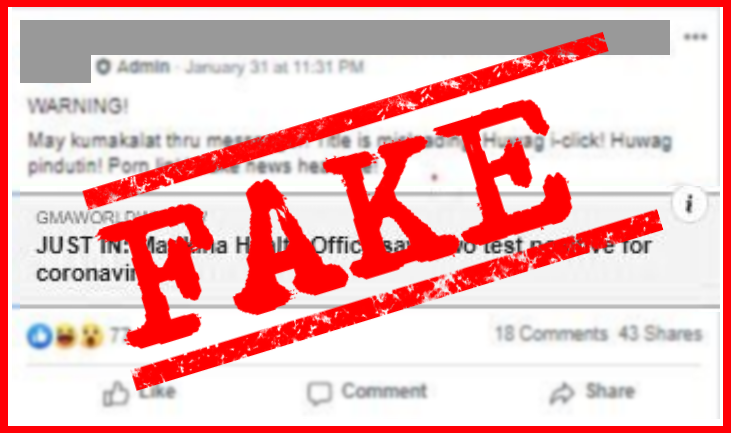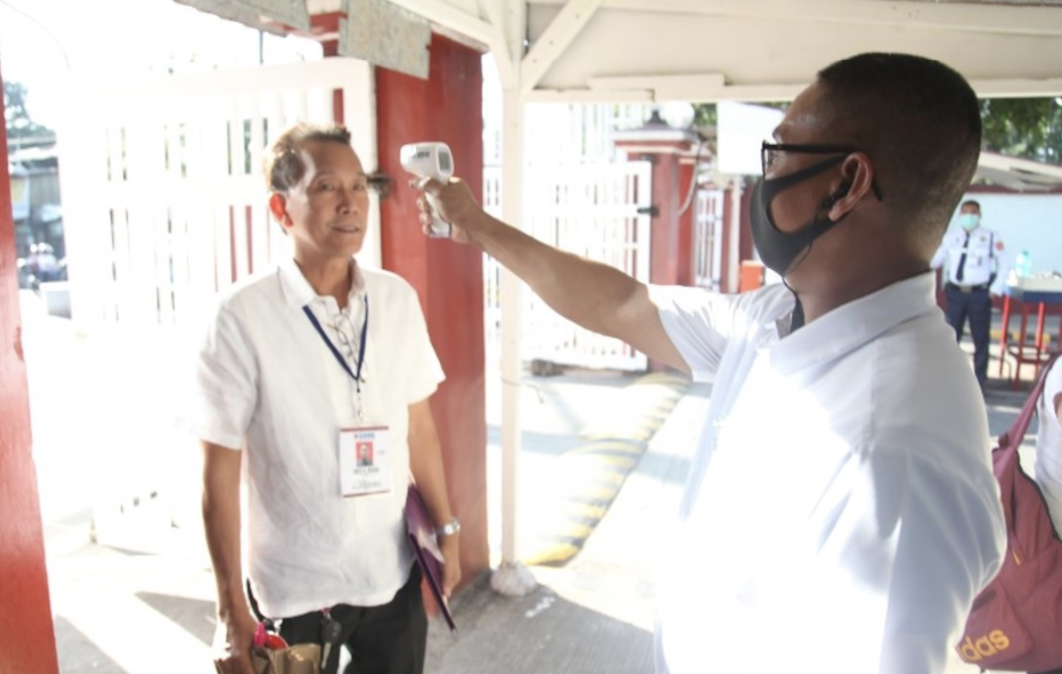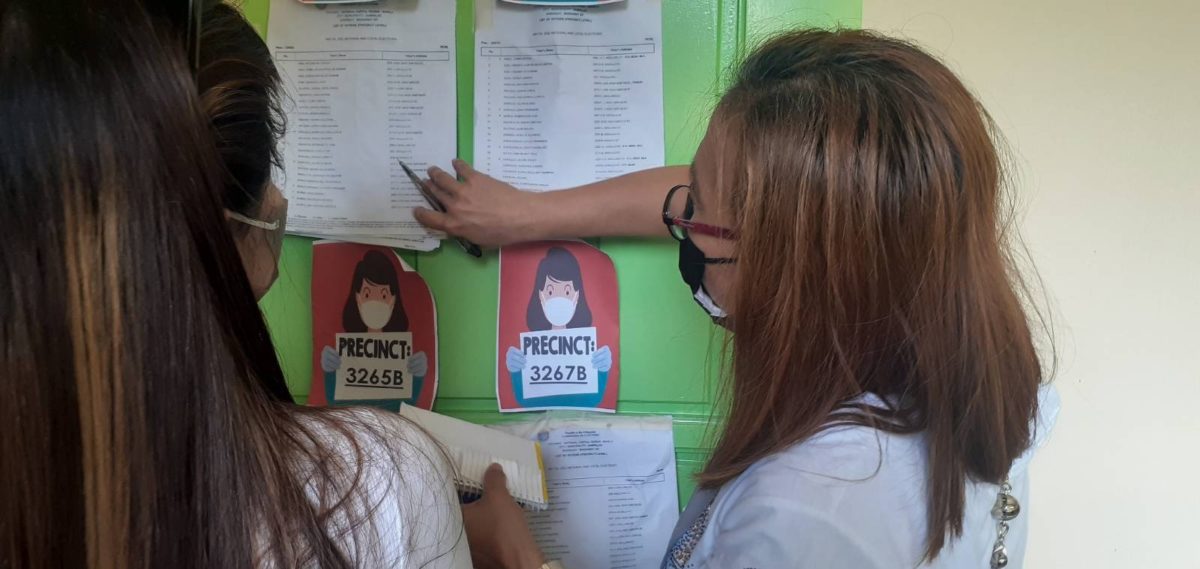The Asian giant hornet or Vespa mandarinia, the world’s largest known hornet, hasn’t been “killing people around the world,” as some Facebook (FB) posts claim. It also isn’t “worse” than the novel coronavirus.
Rumors about people dying from the insect’s sting spread after news of the hornet’s discovery in parts of the United States and Canada in 2019 resurfaced in May. It was the first time the Asian giant hornet was seen in North America; this species is commonly found in South and East Asia.
VERA Files Fact Check flagged at least three posts made from May 26 to 28 that contained a misleading mix of images – screenshots of a video on Asian giant hornets lumped with photos of punctured body parts. These were captioned with the false claim that the hornets have been killing people in different countries and misleadingly compared its effect to the almost 400,000 deaths globally due to COVID-19.
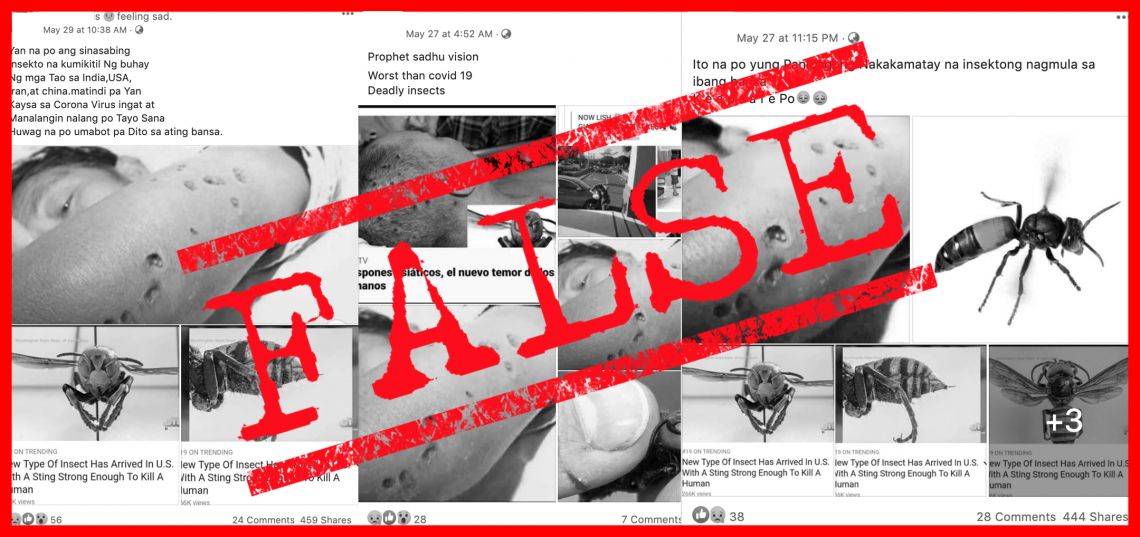
Contrary to the FB posts, news reports in May never mentioned any recent human deaths resulting from the Asian giant hornet’s sting. The hornets are sometimes called “murder hornets” because they can swiftly wipe out honeybee hives by decapitating bees.
In a May 14 article, National Geographic reported that a person “likely would have to be stung by a couple hundred giant hornets” for its venom to be fatal. It added that these insects wouldn’t attack humans unless bothered: “Most deaths from giant hornets’ stings occur because people seriously disturb the insects’ nests.”
Smithsonian Magazine, the publication of museums under the U.S. government, quoted the entomology collections manager at the Smithsonian National Museum of Natural History who said there is nothing to worry about:
“More people die of honey bee stings in the U.S. than die annually, globally, from these hornets. About 60 to 80 people die from [allergic] reactions to honey bee stings [in the U.S.]; only about 40 people die per year, in Asia, mostly in Japan, from reactions to the [giant hornet] stings.”
The photos used in the FB posts were from two different incidents– one in 2013 and the other, in 2020:
- The punctured arm and head were photos from a 2013 wave of attacks by the Asian giant hornet in the province of Shaanxi in China. News reports say it resulted in at least 41 deaths and hundreds of injuries. The incidents could’ve been brought about by “hotter weather in the area” and workers “moving deeper into the isolated rural areas where the hornets typically live,” said the reports.
- The screenshot of the Asian giant hornet is from a video clip on U.S. media CBS Philadelphia’s report on the insects in May.
The three FB posts have been shared over a thousand times.
(Editor’s Note: VERA Files has partnered with Facebook to fight the spread of disinformation. Find out more about this partnership and our methodology.)

